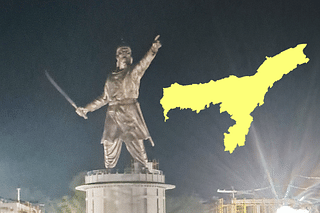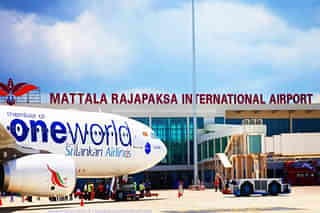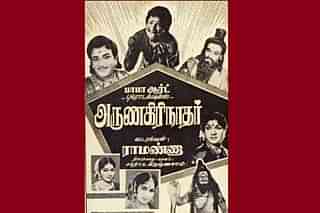Politics
Worse Than Expected: Analysing BJP's Gujarat Tally Of 2004 And 2009
Venu Gopal Narayanan
Mar 11, 2024, 04:26 PM | Updated 04:26 PM IST
Save & read from anywhere!
Bookmark stories for easy access on any device or the Swarajya app.
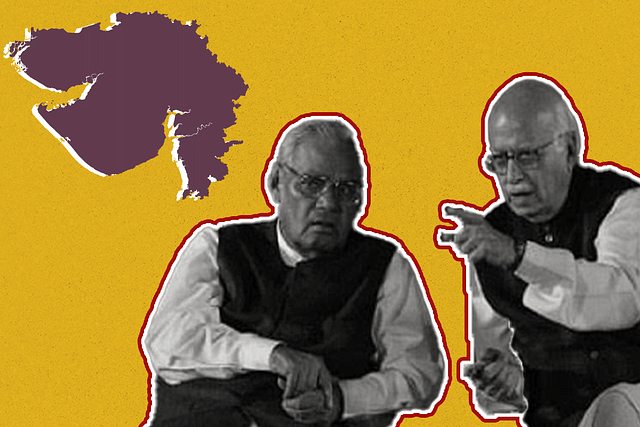
In 2014 and 2019, the Bharatiya Janata Party (BJP) won all 26 parliamentary seats in Gujarat with over 60 per cent of the popular vote; it looks set for a repeat performance in 2024.
That is a sea change from the general elections of 2004 and 2009, in which, the BJP’s growth of the preceding two decades was roundly stopped and reversed by the electorate.
It is this mood swing, in states like Gujarat, Uttar Pradesh, and Madhya Pradesh, more than in others, which handed a shock defeat to the BJP in two successive elections. What happened?
In Gujarat, the BJP’s command performances of the preceding four general elections were reversed, and the party lost both significant vote share and a number of seats in 2004 and 2009; votes and seats which it had worked so hard to gain.
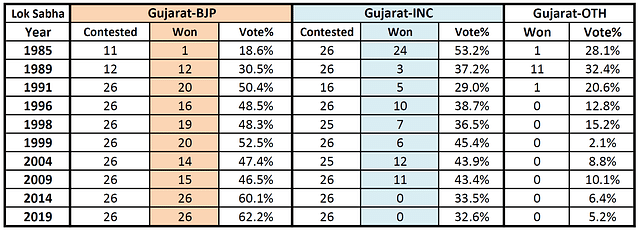
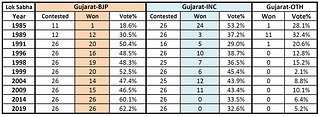
This is the Gujarat results map for the 1999 general elections when the BJP won 20 of 26 seats with almost 53 per cent vote share:
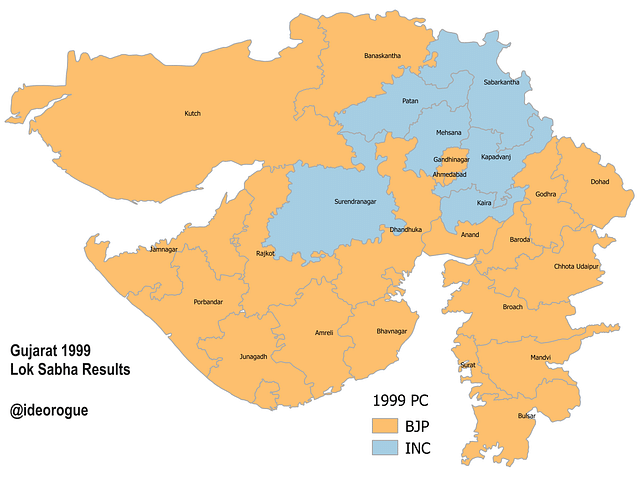
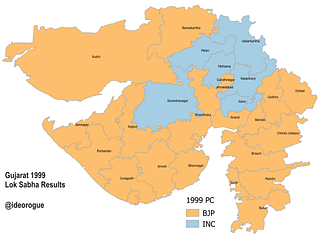
This is the 2004 results map:
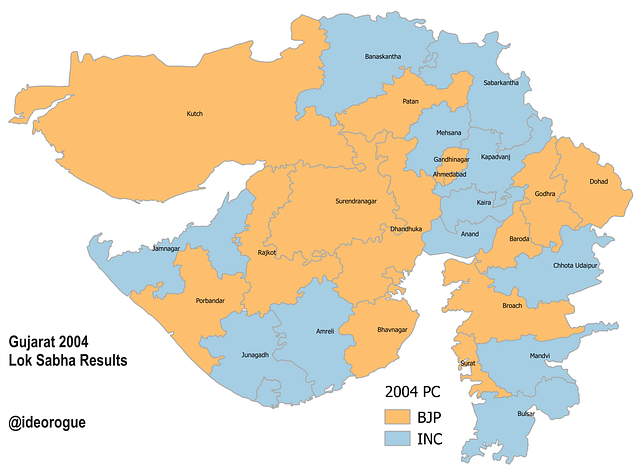
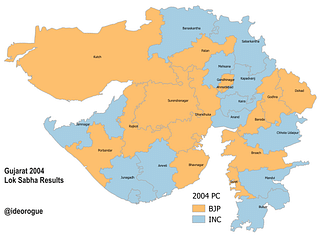
And this is the 2009 results map, following a delimitation of constituencies:
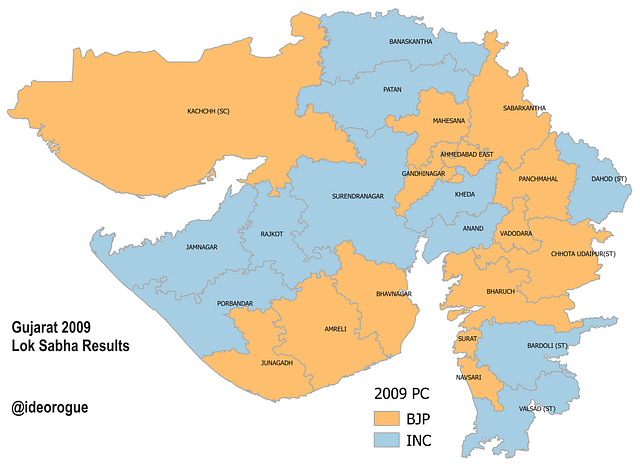
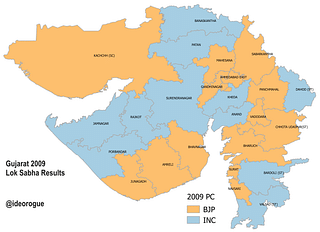
In the run-up to the 2004 elections, the general feeling within the BJP was that 180 Lok Sabha seats, and a robust vote base in a number of large states, was the perfect springboard to push closer towards the halfway mark. They had the allies, and they had the track record.
But they didn’t have the leadership, since Atal Bihari Vajpayee had started to feel his age. Lal Krishna Advani and Murli Manohar Joshi too, were not spring chickens.
It was the right moment to blood the next generation which, pertinently, had risen from the provinces, rather than at the capital as the prevailing generation of leadership largely had.
For this, in 2004, Narendra Modi should have been the BJP’s star campaigner. But it was not to be.
One section feared that Modi, with the 2002 Gujarat riots still fresh in public memory, with the topic still being milked furiously by mainstream media, and a slew of cases suggesting Modi’s direct complicity in the riots, would put off some of the BJP’s allies, and the votes they brought. Popular perception outweighed all else.
We cannot blame the BJP’s decision makers of the time for this, since the decision to not send Modi unto the campaign vanguard was a judgment call. It is also a fact that the BJP, having tasted both power and success for six years, was loath to risk giving up a good thing.
And it was truly a period of paradigmatic achievements: going nuclear with the Pokhran tests in 1998, prosecuting the Kargil War in 1999, steering the Sukhoi 30 MKI purchase, a renewed push on infrastructure with the Golden Quadrilateral, and crucially, the restitution of a tradition of growth-oriented fiscal prudence.
Unfortunately, the net result is that this decision forced the BJP to try and run with the hare, and hunt with the hounds, at the same time.
This in turn led to disenchantment amongst the cadres, all of whom knew Modi well since he had been general secretary of the party for much of the preceding decade. That created a terrible dilemma for the Rashtriya Swayamsevak Sangh (RSS), which had invested so heavily in Modi, for so long, with the precise intention of seeing him rise eventually to the top.
It also peeved the average Gujarati voter. That is why the BJP’s vote share went down by 5 per cent in 2004 in the state. But most of it went to ‘Others’, rather than to the Congress (who, too, saw a minor erosion of vote share in 2004).
This narrowed the win margins and permitted the Congress to wrest back seats where identity politics had been temporarily marginalised by the intense bipolarity of the 1999 elections.
If the results of the 2004 elections weren’t disheartening enough, what happened next was worse.
Advani, who had become party president after Venkaiah Naidu resigned following the defeat, made a visit to Karachi in 2005 May where he praised Jinnah. As Priya Sehgal writes, cross border terrorism was abruptly replaced by cross border secularism. All hell broke loose, and in the end, Advani was forced to resign upon his return to Delhi.
His replacement, Rajnath Singh, advocated a return to Hindutva roots, but at that time, with central power out of the BJP’s hands, and Modi still firmly restricted to Gujarat, it did nothing to invigorate the karyakartas or give confidence to the RSS that change was nigh.
In hindsight, the slump could have been foreseen as early as August 2004, when Uma Bharti was forced to resign as chief minister of Madhya Pradesh for a police case on the 1994 Hubli Idgah riots, and her revolt after she was hung out to dry by the party’s central leadership.
Like Modi before, Bharti too, learnt to her infinite chagrin that some sections of her party-with-a-difference had evolved differently.
How best can we define this new strain which evolved? Restricted by word count as we are, a reasonable way to present the breach would be as one between the ‘Sangh Bhaajap’, who set limits on compromise of principle, and the ‘Lutyens Bhaajap’, who were irreplaceable because, at the time, only they knew how to work the coalition and power levers in Delhi.
So, blaming Sudheendra Kulkarni for the BJP’s electoral losses is both lazy and flawed analysis; he never had that destructive level of control over Advani as some believe, just as Advani did not have an unquestionable grip over either the BJP or the RSS.
It is easy to criticise in hindsight, but it would be unfair to do so, because both views had merit — both principle and pragmatism have high value.
Unfortunately, as a result, dejection led to more cadre ennui, and a second consecutive loss in 2009. This loss was exacerbated by a delimitation which gave the advantage back to the Congress in a number of constituencies.
It was as if the Mumbai terror attacks of November 2008 never happened. No wonder that Manmohan Singh could cheerily meet his Pakistani counterpart at Sharm-al-Sheikh in July 2009, where, rather than taking the Pakistani government to task for the attacks, he instead blithely let them off the hook.
That was also the year when another senior leader of the BJP, Jaswant Singh, shocked the party to its roots, by writing a convoluted, exculpatory book on Jinnah, and calling the principal proponent of partition a ‘great man’ for good effect.
In Gujarat, bipolarity reduced even further, with both the BJP and the Congress losing around a percentage point each to the ‘Others’, thereby making contests tighter, and more susceptible to identity politics. That is why the Congress was able to retain the tribal reserved seats of Bardoli and Valsad, and win back Dahod.
As it turned out, 2009 was the lowest point for the BJP. Over the next five years, with the RSS and the cadres on board again, the BJP determinedly replaced the ‘Lutyens Bhaajap’ with a new stable of leadership (Arun Jaitley could never be categorised as a Lutyens type even if he spent most of his life in Delhi), all from the provinces, all outsiders to the power circles of Delhi, and all who used pragmatism for forcing forward of policy more, and for political compromise, far, far less.
The simple truth is that the RSS, and a large number of BJP cadres sat both the 2004 and 2009 general elections out. It undid the Sangh’s work over the preceding two decades, and gave India 10 years of the United Progressive Alliance.
It was a phase which both party and country had to go through, because it was a rite of passage necessary for political maturation. And this is a lesson to be borne in mind as the BJP prepares itself for another generational leadership change in the coming decade.
(This article is the first of a series which surveys the performance of the BJP in the general elections of 2004 and 2009)
Save & read from anywhere!
Bookmark stories for easy access on any device or the Swarajya app.
Venu Gopal Narayanan is an independent upstream petroleum consultant who focuses on energy, geopolitics, current affairs and electoral arithmetic. He tweets at @ideorogue.
Introducing ElectionsHQ + 50 Ground Reports Project
The 2024 elections might seem easy to guess, but there are some important questions that shouldn't be missed.
Do freebies still sway voters? Do people prioritise infrastructure when voting? How will Punjab vote?
The answers to these questions provide great insights into where we, as a country, are headed in the years to come.
Swarajya is starting a project with an aim to do 50 solid ground stories and a smart commentary service on WhatsApp, a one-of-a-kind. We'd love your support during this election season.
Click below to contribute.

